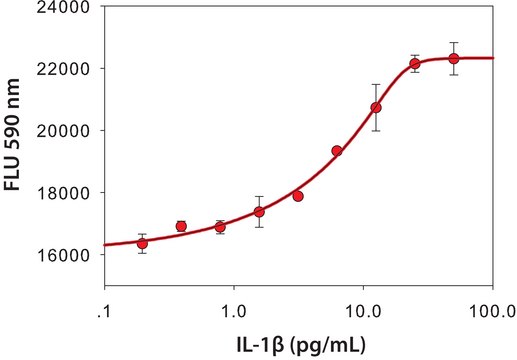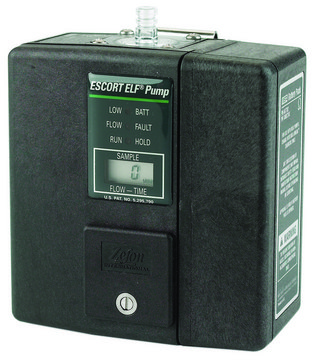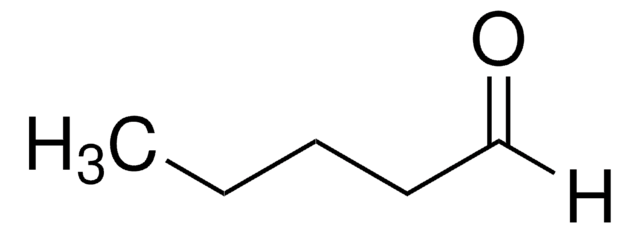11457756001
Roche
Interleukin-1β, human (hIL-1β)
recombinant (E. coli)
Sign Into View Organizational & Contract Pricing
All Photos(1)
UNSPSC Code:
12352207
Recommended Products
biological source
human
recombinant
expressed in E. coli
Assay
>95% (HPLC)
form
solution
potency
≤0.02 ng/mL EC50
mol wt
17,000 Da
packaging
pkg of 100,000 U (2 μg, 1 ml)
manufacturer/tradename
Roche
storage condition
avoid repeated freeze/thaw cycles
impurities
<0.1 EU/μgtested (LAL test)
UniProt accession no.
shipped in
dry ice
storage temp.
−20°C
Gene Information
human ... IL1B(3553)
General description
Recombinant Interleukin-1β, human (hIL-1β) is produced in E. coli and purified by standard chromatographic techniques.
Contents
100,000 U/ml (2 μg/ml) in PBS (phosphate buffered saline) and 1 mg/ml BSA (bovine serum albumin), [purity of BSA: >98%, endotoxin (LAL): <1 EU/mg BSA], filtered through 0.2 μm pore size membrane.
Contents
100,000 U/ml (2 μg/ml) in PBS (phosphate buffered saline) and 1 mg/ml BSA (bovine serum albumin), [purity of BSA: >98%, endotoxin (LAL): <1 EU/mg BSA], filtered through 0.2 μm pore size membrane.
Specificity
Recombinant IL-1β, human is effective on mouse and human cells. Interleukin-1 (IL-1) is produced by a number of cell types, including activated macrophages, B-cells, fibroblasts, and keratinocytes. It mediates a wide range of biological activities, such as stimulation of thymocyte proliferation via induction of interleukin-2 (IL-2) release, stimulation of B-lymphocyte maturation and proliferation, fibroblast growth factor activity, and induction of acute-phase protein synthesis by hepatocytes. IL-1 has also been reported to stimulate prostaglandin and collagenase release from synovial cells, and to be identical to endogenous pyrogen and catabolin.
Two types of human interleukin-1 (hIL-1α and hIL-1β) have been described.
Both types of hIL-1 stimulate proliferation and differentiation of T- and B-lymphocytes. Recently, it has been shown that two different high-affinity IL-1 receptor molecules exist on different cell types. In both, human and mouse, T-cells and fibroblasts express an 80 kDa receptor molecule, whereas an 60 kDa receptor molecule was found on B-cells and neutrophils. The action of hIL-1a and hIL-1ß is mediated by both receptor molecules. IL-1 appears to have a wide range of stimulatory effects on the maturation, differentiation, and growth of many cell types involved in inflammation and development. Cells whose growth is directly or indirectly stimulated by IL-1 are fibroblasts, synovial cells, endothelial cells, epithelial cells, bone marrow cells, T-lymphocytes, and B-lymphocytes.
Two types of human interleukin-1 (hIL-1α and hIL-1β) have been described.
Both types of hIL-1 stimulate proliferation and differentiation of T- and B-lymphocytes. Recently, it has been shown that two different high-affinity IL-1 receptor molecules exist on different cell types. In both, human and mouse, T-cells and fibroblasts express an 80 kDa receptor molecule, whereas an 60 kDa receptor molecule was found on B-cells and neutrophils. The action of hIL-1a and hIL-1ß is mediated by both receptor molecules. IL-1 appears to have a wide range of stimulatory effects on the maturation, differentiation, and growth of many cell types involved in inflammation and development. Cells whose growth is directly or indirectly stimulated by IL-1 are fibroblasts, synovial cells, endothelial cells, epithelial cells, bone marrow cells, T-lymphocytes, and B-lymphocytes.
Application
Interleukin-1 (IL-1), secreted by activated monocytes or macrophages and other cell types, is a pleiotropic factor for a variety of sensitive cells.
Sequence
Chain Length 154 AA
One polypeptide chain (154 amino acids), identical to natural human IL-1β (153 amino acids), but with an extra methionine at the amino-terminus.
Unit Definition
EC50 definition: The amount of hIL-1β that is required to support half-maximal stimulation of DNA synthesis (BrdU incorporation) with mouse C3H/HeJ thymocytes in the presence of saturating amounts of hIL-2 (50 U/ml, 25 ng/ml) (1 unit equals ≤0.02 ng).
Preparation Note
Working concentration: 5-500 U/ml
hIL-1β exerts its biological activity in the concentration range of 5–500 U/mI (0.1–1 ng/ml).
Working solution: Dilute the concentrated IL-1β solution (100,000 U/ml) with PBS or culture medium containing 1 mg/ml BSA [or HSA (human serum albumin)] or 1 –10% serum.
Storage conditions (working solution): -15 to -25 °C
Store the solution in aliquots at -15 to -25 °C.
Note: Avoid repeated freezing and thawing.
hIL-1β exerts its biological activity in the concentration range of 5–500 U/mI (0.1–1 ng/ml).
Working solution: Dilute the concentrated IL-1β solution (100,000 U/ml) with PBS or culture medium containing 1 mg/ml BSA [or HSA (human serum albumin)] or 1 –10% serum.
Storage conditions (working solution): -15 to -25 °C
Store the solution in aliquots at -15 to -25 °C.
Note: Avoid repeated freezing and thawing.
Other Notes
For life science research only. Not for use in diagnostic procedures.
WGK
nwg
Flash Point(F)
No data available
Flash Point(C)
No data available
Regulatory Information
新产品
Certificates of Analysis (COA)
Search for Certificates of Analysis (COA) by entering the products Lot/Batch Number. Lot and Batch Numbers can be found on a product’s label following the words ‘Lot’ or ‘Batch’.
Already Own This Product?
Find documentation for the products that you have recently purchased in the Document Library.
Poole S. & Gaines Das R.E
Journal of Immunological Methods, 142, 1-13 (1991)
Matsushima K, et al.
Journal of Immunology, 136, 4496-4501 (1986)
Chizzonite R
Proceedings of the National Academy of Sciences of the USA, 86, 8029-8033 (1989)
Remvig L,et al.
Allergy, 46, 59-67 null
Allison AC
Bioessays, 3 (1986)
Our team of scientists has experience in all areas of research including Life Science, Material Science, Chemical Synthesis, Chromatography, Analytical and many others.
Contact Technical Service



